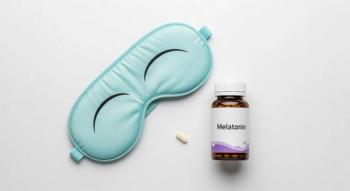
Disordered Sleep Linked to Increased Risk of Suicide in Youth
Emergency department records reveal that youth experiencing disrupted sleep are at greater risk for suicidal thoughts and behaviors.
Youth who experience disrupted or disordered sleep were found to be at increased risk for suicidal thoughts and behaviors, in a recent analysis of emergency department (ED) records.1
“Being aware of the impact of sleep disruption gives us an avenue to try to address sleep issues as well as downstream consequences,” explained study co-author, Melynda Casement, PhD, Department of Psychology, University of Oregon, in an announcement of the study publication.
“Suicide is still stigmatized in many communities; sleep is less so,” she observed. "Identifying and treating
Casement and study co-author Jason Carbone, PhD, School of Social Work, Wayne State University, found previous studies which demonstrate that sleep disruptions predict suicidal thoughts and behaviors (STBs) in both youth and adults, but none that have linked risk for STBs to sleep disorders in nationally representative samples of youth.
Casement and Carbone suggest that adolescents are particularly susceptible to sleep-related STBs, with sleep deficits underlying impairments in cognition, affect, physiology, and social functioning. They attribute vulnerability in part to age-related circadian delays that conflict with sociocultural structures such as early school days, and to the prevalence in this age group of difficulty initiating and maintaining sleep, and of sleep disorders such as
Although sleep problems and disorders also predict psychiatric conditions such as
Casement elaborated on the interrelation in discussing the study with Psychiatric Times. “From the larger body of research, we know that sleep disorders and psychiatric disorders have bidirectional relations with one another—having a sleep disorder makes psychiatric disorders more likely, and having a psychiatric illness makes sleep disorders more likely. We also know that treatment for sleep disorders improves psychiatric health, and treatment for psychiatric disorders can improve sleep,” she said.
“Future research will need to establish whether treatment for sleep disorders, including in youth with psychiatric disorders, can reduce STBs,” Casement remarked.
In designing their study, Casement and Carbone recognized that the relatively few individuals with STBs relative to sample sizes can frustrate investigations into the risk and protective factors for
Sussing Suicide Risk with Sleep Disorder
The investigators identified presentations of suicidal ideation (SI) or of suicide attempts (SA) among 65 million ED visits of individuals aged 6 to 24 years of age from the third quarter of 2015 through 2017 from those diagnostic codes in the Health Care Cost Utilization Project's Nationwide Emergency Department Sample (NEDS). They chose the start date to coincide with EDs in the US changing codes from International Classification of Diseases 9th to 10th revision.
Complaints of sleep disorders were found in the coding for insomnia, hypersomnia, circadian rhythm sleep disorders, sleep apnea,
Casement and Carbone report that a sleep disorder was documented in only 0.32% of ED visits. That is in contrast, they note, with survey data showing a 9% prevalence of insomnia among adolescents in the US, and a 6% prevalence of probable sleep apnea.
“Sleep disorders are massively underdiagnosed in youth presenting to EDs relative to estimates of disorder prevalence in national surveys,” the investigators remarked.
Although sleep disorders were detected in relatively few ED visits, they occurred in 2.91% (95% CI: 2.189-3.88) of ED visits with SI, and in 1.73% (1.30-2.28) of those with SA. Mood disorders were present in 3.84% of ED visits, and in the majority of those with SI (60.12%; 58.41-61.82) and SA (54.65%; 52.64-56.65). Substance use disorders were present in 9.57% (9.10-10.05) of ED visits, and in 26.90% (25.69-28.15) of those with SI and 25.19% (23.18-26.62) with SA. Psychotic disorders were present in 0.56% of ED visits, and in 5.95% (5.57-6.41) with SI and 3.96% (3.53-4.65) of those with SA.
The investigators calculated that youth with any sleep disorder had more than 3 times the odds of having SI compared to individuals without a sleep disorder diagnosis (adjusted odds ratio [aOR]=3.22; 2.61-3.98), and 66% greater odds (aOR=1.66; 1.43-1.94) when adjusting for comorbid affective,
“These results suggest that detection of SI in youth presenting to EDs could improve with detection of insomnia and hypersomnia diagnoses, independently or in addition to detection of mood disorders and psychotic disorders,” the investigators indicated.
Youth with any sleep disorder were at 48% higher risk for SA (aOR=1.48, 1.22-1.80) when psychiatric diagnoses were not accounted for, indicating to the investigators that detecting sleep disorders has value in predicting SA in the absence of information about psychiatric diagnoses.
“Based on these results, we can say that sleep disorder diagnoses predict thoughts of death or a desire to die even when psychiatric illness is accounted for, but sleep disorder diagnosis did not enhance prediction of behaviors to kill oneself,” Casement commented.
The apparent low rate of detecting disordered sleep in patients presenting to the ED reflects a larger deficit in health care, according to Casement. She considers it a missed opportunity to address a key risk factor for STBs and accidental injury, the 2 leading causes of death and disability in youth.
“Health care training programs and accrediting bodies could improve the likelihood of accurate diagnosis for sleep disorders by requiring education on the high prevalence of sleep disorders, the impact of sleep disorders on mental and physical health, and diagnosis and treatment of sleep disorders,” Casement suggested.
Dr Bender reports on medical innovations and advances in practice and edits presentations for news and professional education publications. He previously taught and mentored pharmacy and medical students, and provided and managed pharmacy care and drug information services.
References
1. Carbone JT, Casement MD.
Newsletter
Receive trusted psychiatric news, expert analysis, and clinical insights — subscribe today to support your practice and your patients.

















